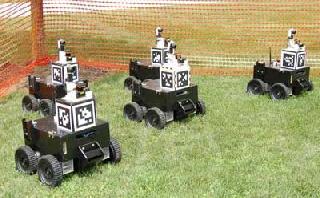
The new Russian module Rassvet. A NASA photo
Scientific research work conducted on the International Space Station (ISS) offers researchers an unparalleled opportunity to test physical processes in the absence of gravity. The results of these experiments will allow scientists to better understand our world and prepare for future missions, perhaps to the Moon and Mars.
The Destiny laboratory is the primary research laboratory for US payloads, supporting a wide range of experiments and studies contributing to health, safety and quality of life for people all over the world. The European Columbus Module and Japanese Kibo Laboratory were both launched and mated to the ISS in 2008.
The Mini-Research Module-1 (MRM-1) is a new Russian laboratory that has been delivered to the ISS by NASA’s space shuttle Atlantis on the STS-132 mission on May 14, 2010.
The module which has been named Rassvet - a Russian word meaning dawn - hosts a variety of biotechnology, biological science, fluid physics and educational research experiments enhancing the space station's research capabilities and enabling new investigations to be performed. It will also provide an additional docking port for Russian Soyuz and Progress vehicles at the space station.
Cosmonauts on July 26 outfitted the new Rassvet module for a Kurs automated rendezvous system capability for future dockings of Russian vehicles arriving at the station to link up to Rassvet.
MRM-1:
The laboratory contains a pressurized compartment with eight workstations equipped with facilities such as a glove box to keep experiments separated from the in-cabin environment; two incubators to accommodate high- and low-temperature experiments and a vibration isolation platform to protect payloads and experiments. It also will be used for cargo storage.
MRM – 1 contains four other workstations, complete with mechanical adapters, to install payloads into roll-out racks and shelves. The module berthed to the Earth-facing port of the Zarya module, will also provide a fourth docking port on the Russian operation segment of the station for the docking of Soyuz and Progress vehicles.
The MIM1 was successfully added to the Russian segment of the space station on May 18. The module designed and built by SP Korolev RSC Energia has been guaranteed a lifetime of 12 years.
In order to increase the utilization efficiency of the Russian segment, some advanced principles of research facilities development and integration has been applied to the module. The benefits include conducting experiments such as Conjugation, which studies the exchange of genetic material in microgravity to develop strains producing new target proteins to fight disease.
Another experiment, Kristallizator, allows large protein crystals to grow in orbit to better determine their 3-D structure. The results could be used in biology, medicine and pharmacology.
Delivering Rassvet has enabled NASA to fulfill its promise to ship equipments for the Multipurpose Laboratory Module (MLM) without adding another payload flight to accommodate the MLM outfitting equipment, as it can attach the hardware to the exterior of MRM 1.
The new MRM 1 also solved the issue of overlapping missions of the Progress, Soyuz, and ATV spacecraft that highlight the need of having four Russian docking ports available on the ISS.
The ISS now have 4 docking ports (the aft port of Zvezda, the port of Pirs (later MLM) on the nadir port of Zvezda, the port of MRM 2 on the zenith port of Zvezda, and the port on MRM 1 on the nadir port of Zarya).
For its flight to the station, the MRM-1 carried a total of 6,482 pounds (2,940 kilograms) of cargo on its internal and exterior stowage locations while in Atlantis’payload bay. On its shell, Rassvet carried a spare elbow joint for the European Robotic Arm (ERA) and outfitting equipment for the Russian Multi-Purpose Laboratory Module (MLM).
MRM-1 basic specifications:
Module launch mass: 5,075 kilograms
Total launch mass: 8,015 kilograms - including cargo (European Robotic Arm for Columbus, airlock for Multipurpose Laboratory Module and a portable workplace)
Maximum hull diameter: 2.35 meters
Hull length between docking assembly planes: 6.0 meters
Pressurized volume: 7.4 cubic meters
Habitable volume: 5.85 cubic meters
- Courtesy
NASA
 Previous Article
Previous Article Next Article
Next Article












The Indian Air Force, in its flight trials evaluation report submitted before the Defence Ministry l..
view articleAn insight into the Medium Multi-Role Combat Aircraft competition...
view articleSky enthusiasts can now spot the International Space Station (ISS) commanded by Indian-American astr..
view article